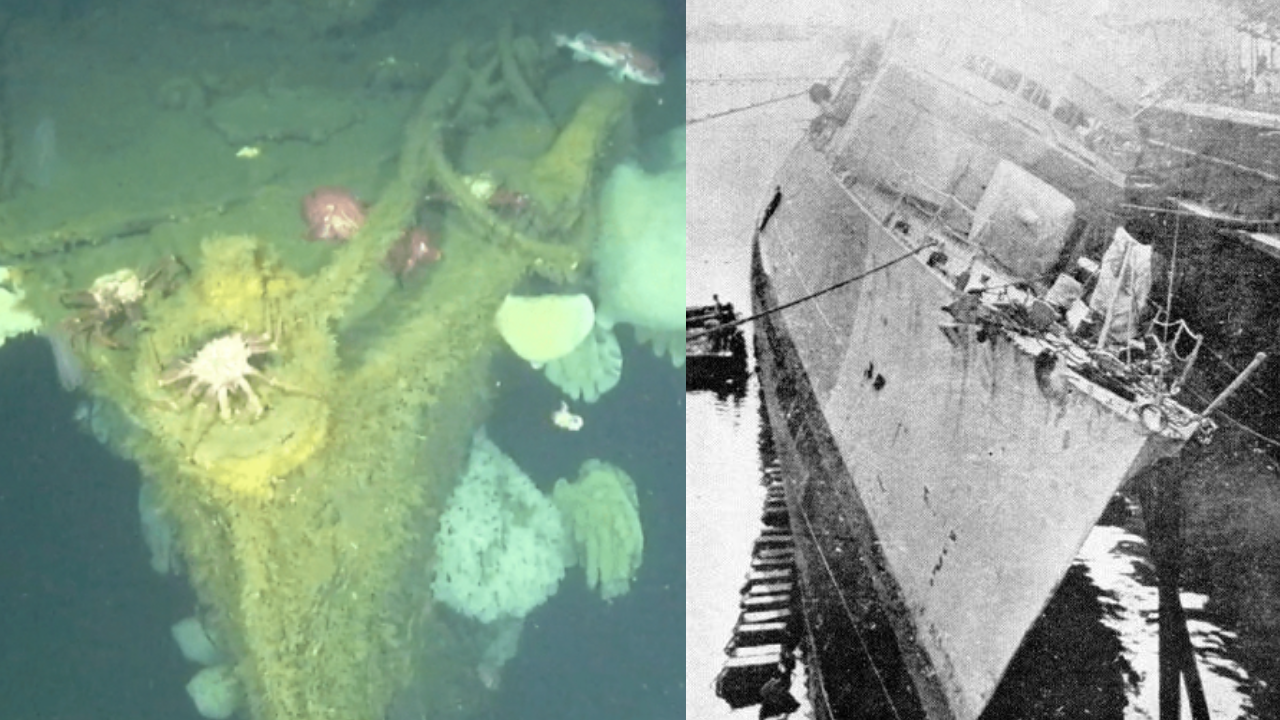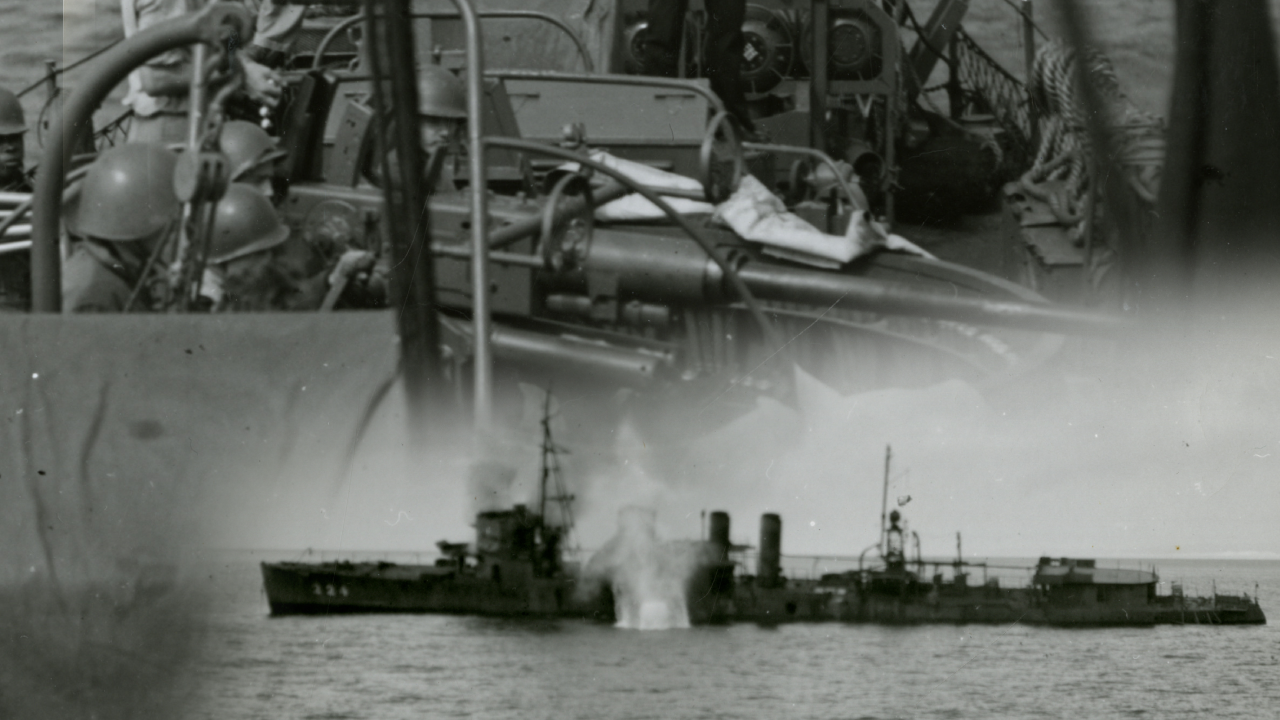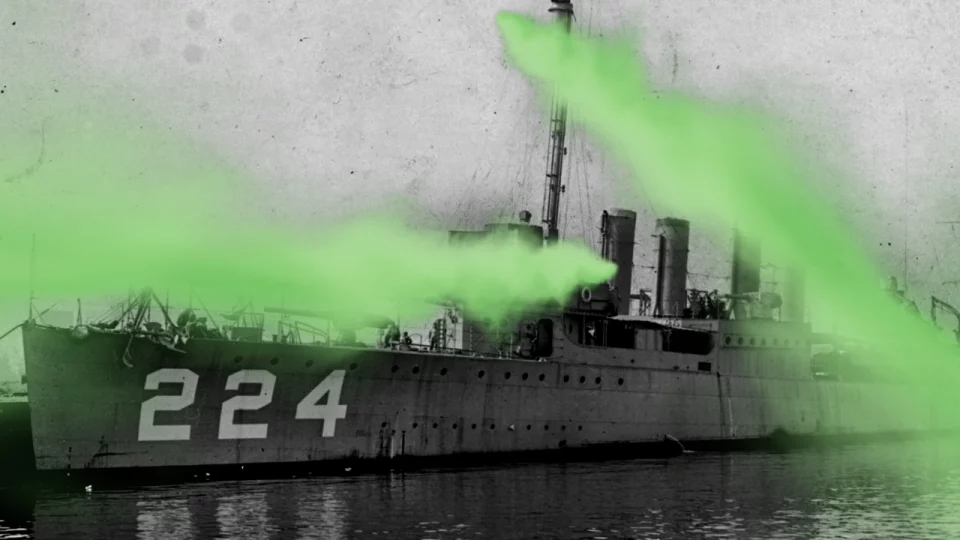The vast ocean has always held secrets of the past, carrying with it memories of brave battles, tragic losses, and heroism from times long gone. Occasionally, these secrets resurface, shedding light on fascinating stories that have lived in history books but remained elusive in the physical world. One such story has recently come to life: the discovery of the USS Stewart, a mysterious World War II-era vessel often referred to as the “Ghost Ship of the Pacific,” lying off the coast of Northern California.
This recent discovery provides a unique glimpse into the vessel’s history, one marked by international conflict, unexpected turns of fate, and eventual rediscovery.
Table of Contents
The Discovery of a WWII Relic
The wreck of the USS Stewart, a storied ship that had long been lost beneath the waves, was recently discovered during an expedition led by the Air/Sea Heritage Foundation in collaboration with Ocean Infinity, SEARCH, NOAA’s Office of National Marine Sanctuaries, and the Naval History and Heritage Command (NHHC). This expedition, carried out with precision and respect for maritime heritage, was aimed at locating and documenting historical shipwrecks that played vital roles during World War II. The discovery of the USS Stewart not only captured the attention of maritime historians but also rekindled the memories of its unusual history, earning it the nickname “Ghost Ship of the Pacific.”
The USS Stewart, a destroyer that once served in the U.S. Navy, had an incredibly unique journey during the Pacific conflict, where it was essentially “lost” and then resurrected—first by an opposing force and later by its original owners. The rediscovery of the vessel off the coast of Northern California provides an opportunity to revisit a series of fascinating events that make the Stewart’s story one of the most unusual in the annals of naval history.

A Storied Past: The USS Stewart’s Wartime Role
Commissioned in 1920, the USS Stewart (DD-224) served as part of the United States Navy’s Asiatic Fleet, stationed in the Pacific. This fleet was tasked with maintaining American interests in Asia, particularly in the turbulent years leading up to and during World War II. When Japan entered the war with the attack on Pearl Harbor in December 1941, the situation in the Pacific quickly escalated, and Stewart, along with other ships in the Asiatic Fleet, was thrust into the frontlines.
In early 1942, Stewart found itself stationed in Manila, actively participating in efforts to hold back the Japanese advance. Despite its efforts, the situation became increasingly dire as Japanese forces overran much of Southeast Asia. During these intense battles, Stewart sustained significant damage in February 1942, which required extensive repairs.
A Twist of Fate in Indonesia
The USS Stewart’s journey took an unexpected turn when it was docked in a repair drydock in Indonesia. During the repairs, a freak accident left Stewart stuck in an awkward position—quite literally. As Japanese forces closed in, the U.S. Navy was left with no option but to abandon the ship. The crew made the difficult decision to evacuate, leaving the damaged destroyer behind in a hurried retreat as Japanese forces tightened their grip on the region.
But the Stewart’s story did not end there. Instead of being destroyed or lost forever, the Japanese forces found the vessel and decided to salvage it. Remarkably, the Stewart was brought back into service—not for the U.S. Navy, but for the Imperial Japanese Navy. Repaired and repurposed, it became a patrol vessel for the Japanese forces, a role that it held until the end of the war. This is where the ship earned its nickname—the “Ghost Ship.” Allied pilots reported seeing what appeared to be a familiar U.S. vessel operating alongside Japanese warships, and these sightings helped foster the legend of the “Ghost Ship of the Pacific.”
The Return of the “Ghost Ship”
As the war drew to a close in 1945, the Stewart was eventually found in the Japanese port city of Kure. Despite the ship’s adoption by the Japanese, the Allies recognized the USS Stewart as their own and decided to reclaim it. The ship was recommissioned and brought back into service under the U.S. Navy, a rare and remarkable twist in the history of naval warfare.

After being towed back to San Francisco, Stewart’s service days were effectively over. It was repurposed one final time—not as a fighting ship, but as a target vessel for naval artillery practice. In 1946, it received a form of burial at sea when it served as a target in a naval exercise, taking artillery fire before finally sinking to the ocean floor off the coast of California.
Rediscovery and Significance
The rediscovery of the USS Stewart’s final resting place has stirred significant interest among historians, maritime enthusiasts, and the general public. Russ Matthews, president of the Air/Sea Heritage Foundation, expressed the emotional impact of finding this legendary vessel. He explained how the name given to the Stewart by the U.S. Navy, “RAMP-224,” stood for “Recovered Allied Military Personnel,” but in the eyes of those who served, the ship was more than just a piece of machinery. It was a shipmate—an enduring symbol of the resilience and resourcefulness that characterized those who served during the war.
“The ship may have been lost, abandoned, and taken by the enemy, but it was never forgotten,” Matthews said. “It’s clear that those who served alongside the USS Stewart thought of it more like a shipmate than just another vessel, and we are proud to help honor its legacy and the memory of those veterans once again.”
Protecting the Legacy
With the ship now located, the U.S. Navy, led by the Naval History and Heritage Command, has reiterated the importance of protecting historical shipwrecks. Samuel J. Cox, the director of NHHC, emphasized that the USS Stewart remains sovereign property of the United States in perpetuity, regardless of how it was lost. The ship’s resting place is now protected under the U.S. Sunken Military Craft Act, which is designed to safeguard military shipwrecks from unauthorized disturbance.
“Whether lost in battle or sunk as a target, a warship remains sovereign property,” Cox stated. “The discovery of the USS Stewart helps us honor its history and protect its resting place from unauthorized disturbances. These wrecks are not only artifacts of history, but they also serve as memorials to the service members who fought during the war.”
Unraveling the Mysteries of the Deep
The story of the USS Stewart is a powerful reminder of the unpredictability of war and the resilience of those involved. Its rediscovery opens the door to further exploration of forgotten maritime history and the mysteries that the ocean still holds. The ship’s story—its abandonment, adoption by enemy forces, and subsequent repatriation—illustrates the complex and often unpredictable nature of naval warfare. It also serves as a reminder of the enduring connections that sailors feel with their vessels, no matter the circumstances.
Maritime archaeologists and historians are excited about what the Stewart’s wreck may still reveal. While much of the ship’s story is already known from historical records, examining the physical remains can provide new insights into its time with the Imperial Japanese Navy, its condition after reclamation by U.S. forces, and even the process by which it was eventually sunk as part of a training exercise. Each of these phases of the ship’s life adds layers of history that help paint a more complete picture of the Pacific conflict.
The Emotional Connection to History

For many veterans and their families, the rediscovery of the USS Stewart is more than just a historical event—it is an emotional connection to the past. Ships like the Stewart carried the hopes, fears, and sacrifices of thousands of sailors, and their stories are deeply entwined with those who served aboard them. The ship’s journey, from serving the U.S. Navy, being captured by enemy forces, and eventually finding its way back home, mirrors the resilience and spirit of those who fought during World War II.
The nickname given to Stewart—“RAMP-224”—reflects the deep attachment that the sailors had to their ship. Though it was no longer capable of fighting, it symbolized the service and sacrifice of those who were part of its crew. Finding the wreck and documenting its condition is a way to honor those who served aboard it, both during its time in U.S. service and its coerced role with the Imperial Japanese Navy.
A Legacy Preserved Beneath the Waves
The story of the USS Stewart is emblematic of the broader themes of World War II—conflict, resilience, reclamation, and remembrance. It is a testament to the unpredictable nature of war and the incredible adaptability shown by those involved. The ship’s final resting place beneath the waves of the Pacific serves as a fitting tribute to a vessel that saw so much change during its lifetime.
The recent expedition that led to the discovery of the Stewart has brought renewed attention to this fascinating chapter in naval history. It underscores the importance of preserving such wrecks, not just as artifacts of military history, but as symbols of the human experience during wartime. The collaboration between different organizations, including the Air/Sea Heritage Foundation, Ocean Infinity, NOAA, and the NHHC, demonstrates the dedication required to preserve and honor the history that lies beneath our oceans.
